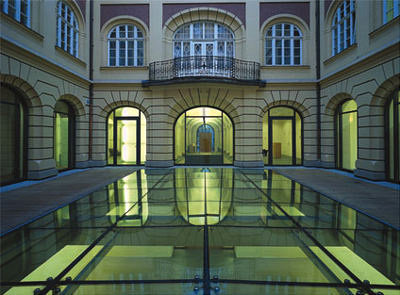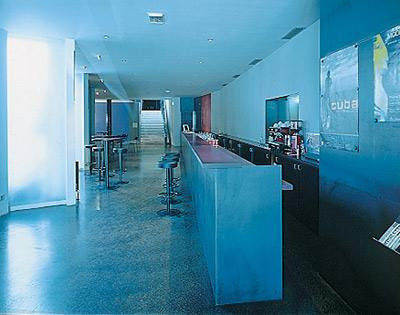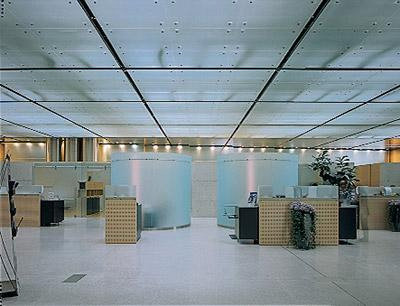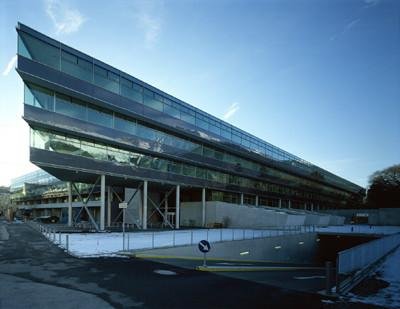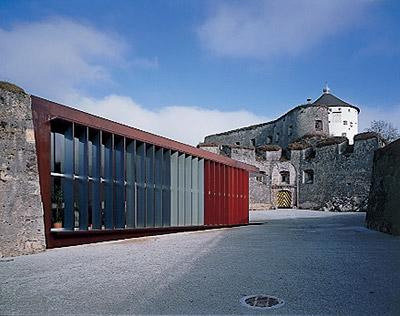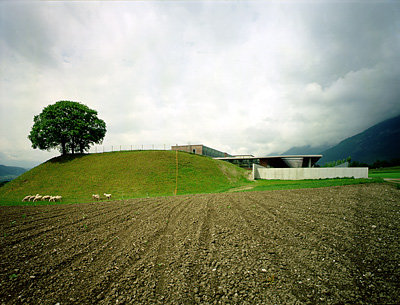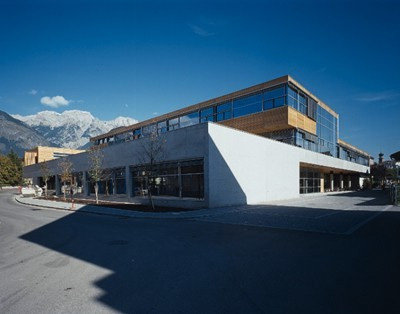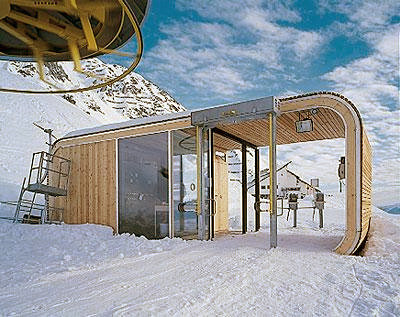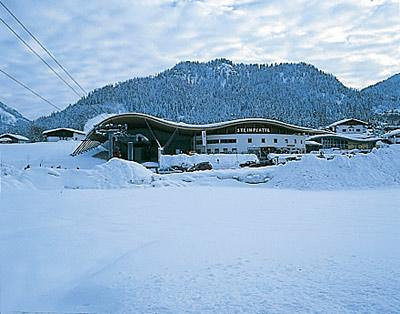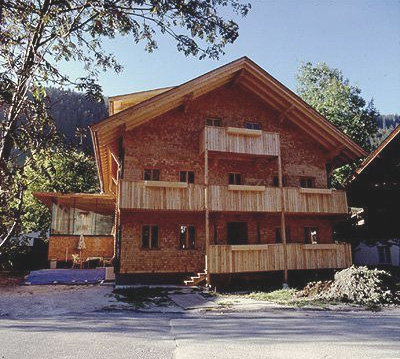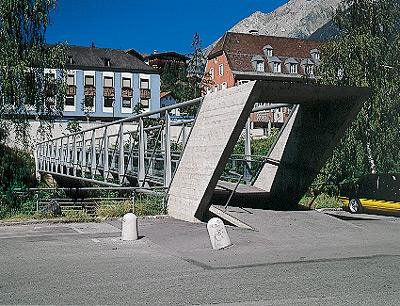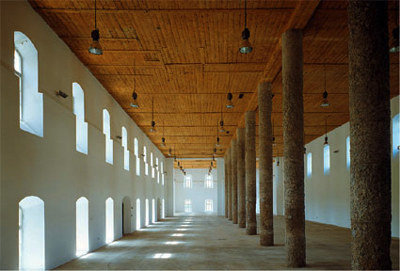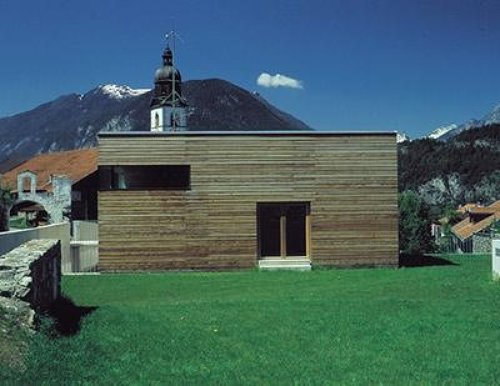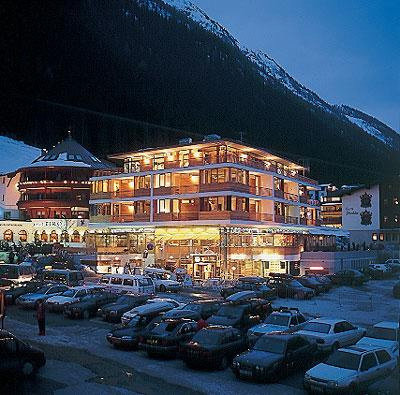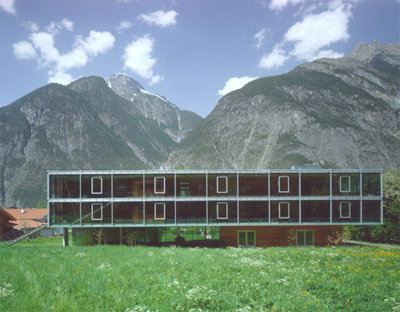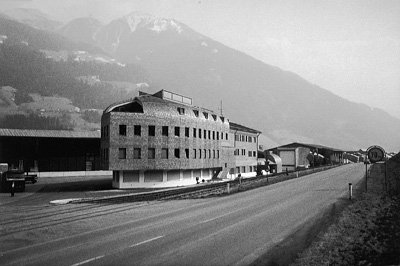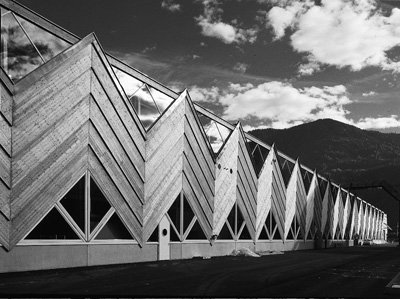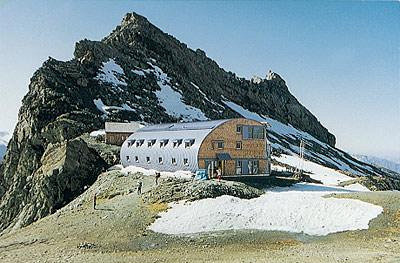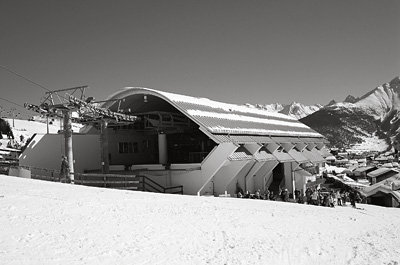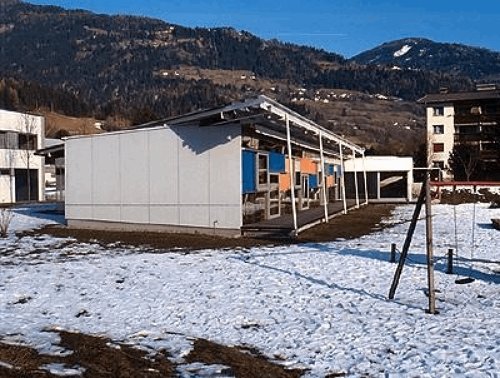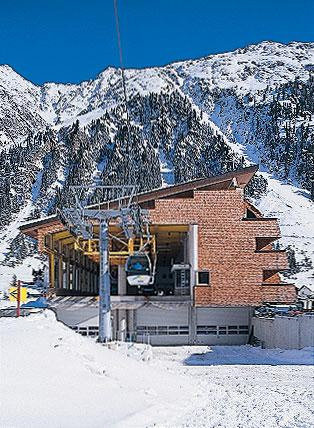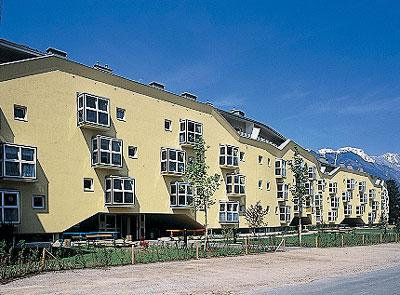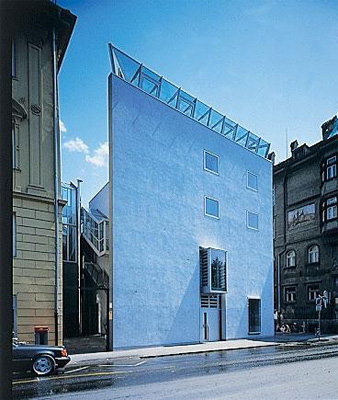Galerie im Taxispalais (art gallery alterations and additions)
Architecture: Hanno Schlögl (1998-1999) Builder-owner: Land Tirol Open to the public: Tue-Sun 11a.m.-6 p.m., Thu until 8 p.m. TIP: Internationally renowned contemporary art exhibitions
Since the 1960’s, the Taxis palace, built around 1690 by J. M. Gumpp the Elder, hosts the Region’s contemporary art gallery. To create additional space for exhibitions, a new hall was carved into the courtyard of the baroque palace that now – not unlike in a pond – is mirrored in the glass roof of the new underground hall. That kind of interaction between the historical ensemble and contemporary intervention is characteristic of the entire project, so art exhibitions have found an architecturally fascinating location.


